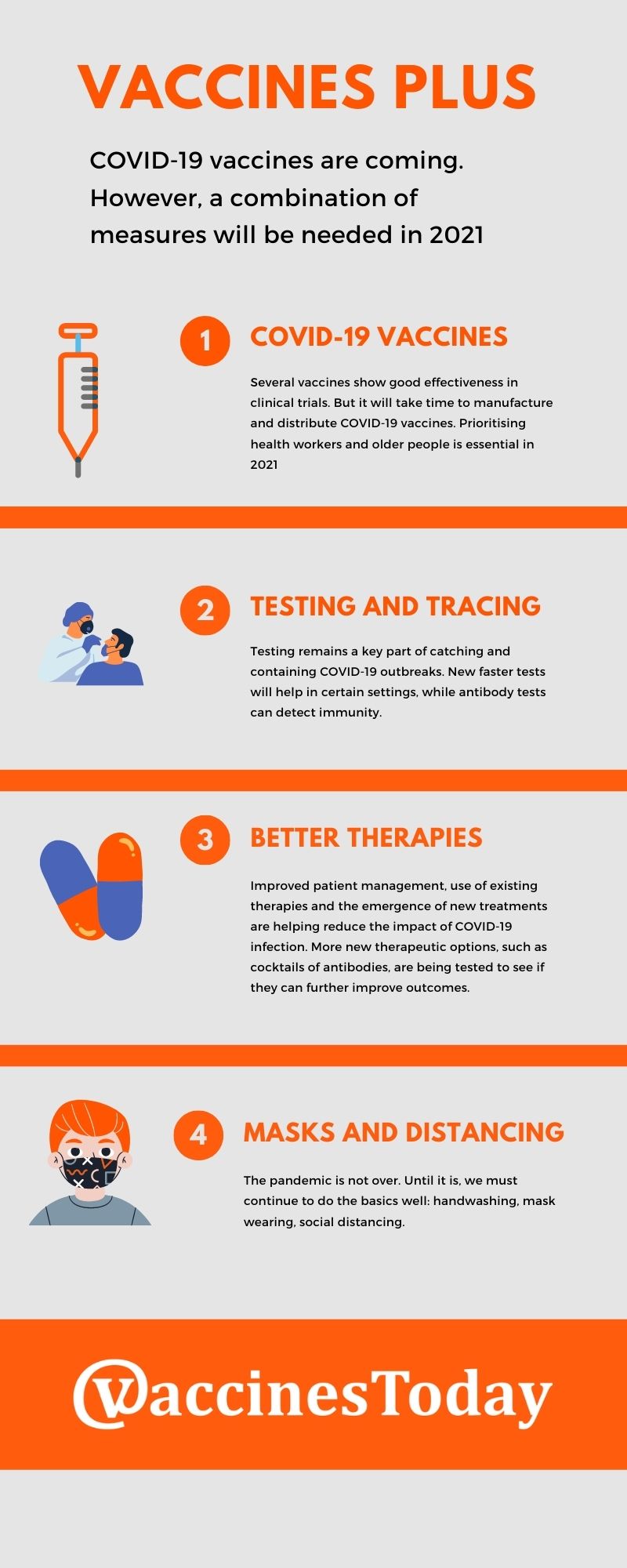On 21 December – the shortest day of the year – approval of the first COVID-19 vaccine was recommended by the European Medicines Agency. The move paves the way for the vaccination of tens of millions of people in Europe, offering hope just as concerns grow over a new variant of the virus.
- Conditional authorisation for first coronavirus vaccine
- 2021 can be brighter than 2020
- Vaccines alone will not be silver bullet
- No evidence that vaccine will not work against new variant
The Agency’s human medicines committee (CHMP) said it had completed its rigorous evaluation of the first ever coronavirus vaccine. It concluded, by consensus, that sufficiently robust data on the quality, safety and efficacy of the vaccine are now available to recommend a formal conditional marketing authorisation. This is the first mRNA vaccine ever to be approved in Europe.
‘Today’s positive news is an important step forward in our fight against this pandemic, which has caused suffering and hardship for so many,’ said Emer Cooke, Executive Director of EMA. ‘We have achieved this milestone thanks to the dedication of scientists, doctors, developers and trial volunteers as well as many experts from all EU Member States.
She said a very large clinical trial showed the vaccine was effective at preventing COVID‑19 in people from 16 years of age. It is not yet clear whether the vaccine prevents onward transmission of the virus, but this is being followed closely as growing numbers of people are vaccinated.
‘Our thorough evaluation means that we can confidently assure EU citizens of the safety and efficacy of this vaccine and that it meets necessary quality standards,’ said Cooke. ‘However, our work does not stop here. We will continue to collect and analyse data on the safety and effectiveness of this vaccine to protect people taking the vaccine in the EU.’
The trial, one of the largest ever conducted on a new vaccine, involved around 44,000 people in total. Half received the vaccine and half were given a dummy injection. People did not know whether they received the vaccine or the dummy injection.
The study showed a 95% reduction in the number of symptomatic COVID-19 cases in the people who received the vaccine (8 cases out of 18,198 got COVID-19 symptoms) compared with people who received a dummy injection (162 cases out of 18,325 got COVID-19 symptoms). This means that the vaccine demonstrated a 95% efficacy in the clinical trial.
Harald Enzmann, CHMP Chair: The main #ClinicalTrial for this vaccine, which enrolled over 43,000 people, is one of the largest we have ever evaluated for a vaccine. https://t.co/qOyMcYLI4y
— EU Medicines Agency (@EMA_News) December 21, 2020
The trial also showed around 95% efficacy in the participants at risk of severe COVID-19, including those with asthma, chronic lung disease, diabetes, high blood pressure or a body mass index ≥ 30 kg/m2. The high efficacy was maintained across genders, racial and ethnic groups.
The most common side effects were usually mild or moderate and got better within a few days after vaccination. They included pain and swelling at the injection site, tiredness, headache, muscle and joint pain, chills and fever. The safety and effectiveness of the vaccine will continue to be monitored as it is used across the Member States, through the EU pharmacovigilance system and additional studies by the company and by European authorities.
Product information and clinical data will be published by the Agency on its website, along with an overview of the vaccine in lay language.
This is 🇪🇺 moment: we are one step closer to a safe & effective #COVID19 vaccine.
@EMA_News has recommended a conditional marketing authorisation for #BioNTech @pfizer vaccine.@EU_Commission & Member States will now proceed with urgency.#SafeVaccines #StrongerTogether pic.twitter.com/FVl4E4Z2fg— Stella Kyriakides (@SKyriakidesEU) December 21, 2020
The first vaccine works by preparing the body to defend itself against COVID-19. It contains a molecule called messenger RNA (mRNA) which has instructions for making the spike protein. This is a protein on the surface of the SARS-CoV-2 virus which the virus needs to enter the body’s cells.
When a person is given the vaccine, some of their cells will read the mRNA instructions and temporarily produce the spike protein. The person’s immune system will then recognise this protein as foreign and produce antibodies and activate T cells (white blood cells) to attack it.
If, later on, the person comes into contact with SARS-CoV-2 virus, their immune system will recognise it and be ready to defend the body against it. The mRNA from the vaccine does not stay in the body but is broken down shortly after vaccination.
Three other vaccines are currently under ‘rolling review’ by the EMA and could be approved in early 2021 if the regulator is satisfied with the safety and efficacy of the vaccines.
It is expected that it will take several months to vaccinate enough people to significantly alter the course of the pandemic. This means guidelines on social distancing and mask-wearing remain an important infection control tool.
However, over time, if enough people are vaccinated, the approval of this vaccine – and others which are currently under review – could mark the beginning of the end.




